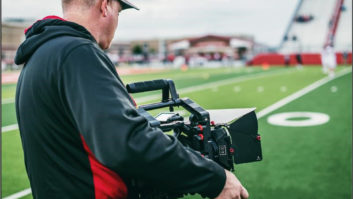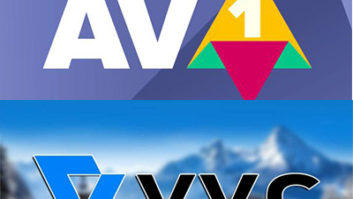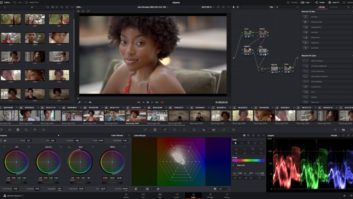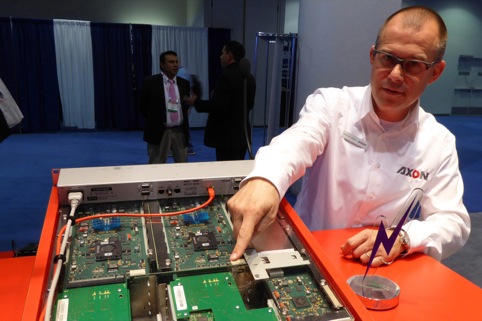
A 30-year veteran of the NAB convention, David Kirk, outlines the most significant presentations at this year’s NAB conference sessions.
UHDTV2 broadcasting
Exploring 1,600 show booths during the 32 hours that the NAB show is open is one way to catch up on the latest broadcast innovations – half a minute per exhibitor if you factor in the time needed to walk from one booth to the next. A much more efficient new technology indicator is the NAB conference, running in parallel to the NAB trade show.
The transition from HD to 4K and 8K was a dominant theme for many camera manufacturers. Kazuhiro Otsuki and colleagues (NHK Tokyo) contributed a paper describing recent work on satellite-to-home transmission of UHDTV2:
“In Japan, Super Hi-Vision test services are planned to begin in 2016 and commercial services are scheduled for 2020. NHK has studied MPEG Media Transport (MMT) as a transport protocol for next-generation broadcasting systems since it enables hybrid delivery using broadcasting and broadband networks. In the proposed transport scheme, the media components (audio, video, and other data) are encapsulated in an optimised MMT-based format for low delay decoding and carried in MMTP packets.”
UHDTV1 or UHDTV2?
Thierry Fautier of Harmonic addressed ‘Ultra HD in 2014: A Real World Analysis’:
“UHDTV (sometimes called Ultra HD) for broadcast is starting to gain traction around the world through a number of major trials. Efforts are underway within the EBU/DVB to specify the key parameters for broadcast applications in terms of frame rate, bit depth, and colorimetry. The broadcast networks are not ready for UHDTV and, in the preliminary stages when the audience is still limited, it is unclear if a broadcast mechanism is the best way to carry UHDTV as opposed to VoD. OTT is expected to be the first service deployed.”
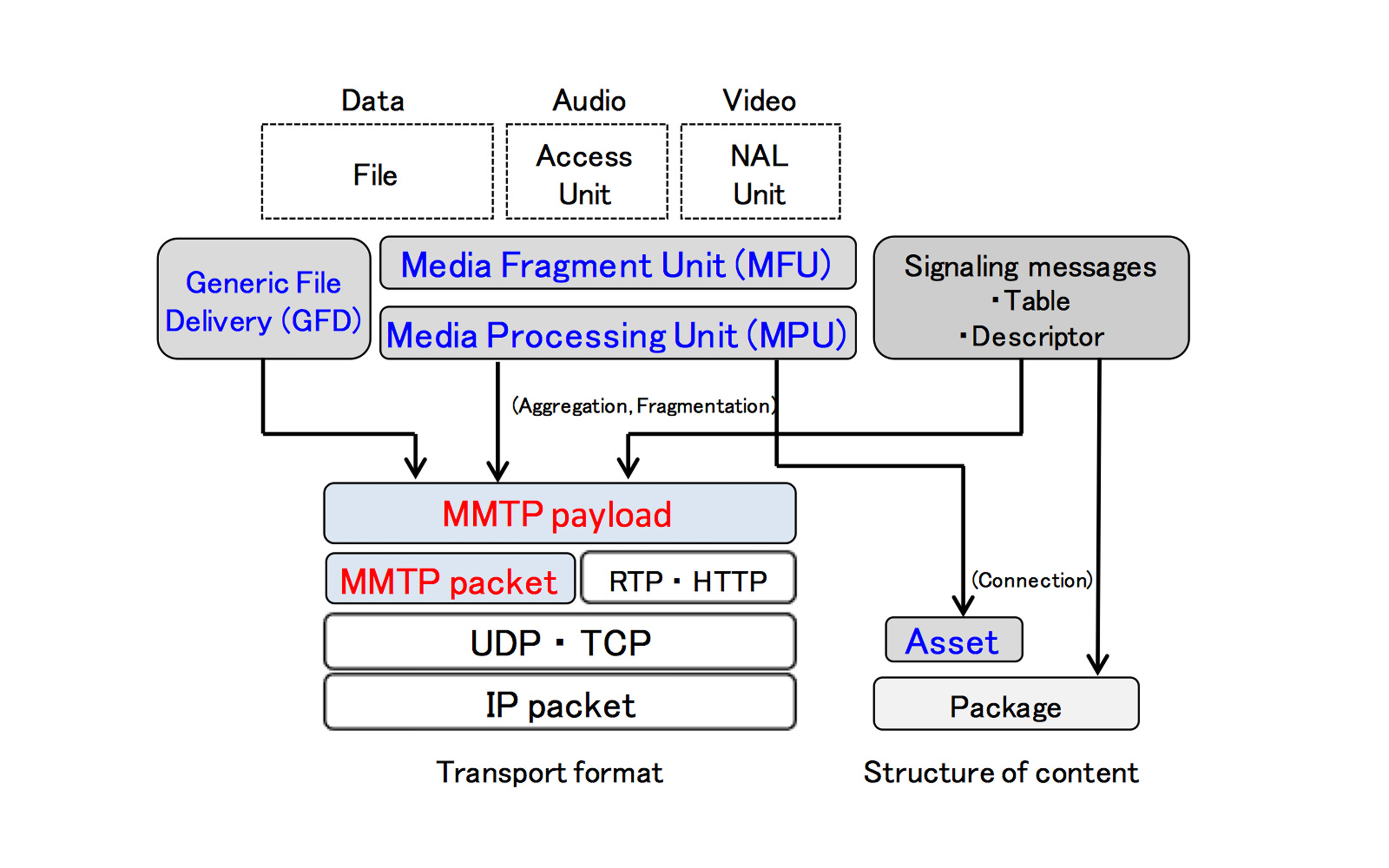
“There is a debate on UHDTV1 (3840×2160) versus UHDTV2 (7680×4320). Harmonic believes that the electronic technology as well as the available bandwidth and cost per bit transmitted/stored will only allow UHDTV1 in the short term and that UHDTV2 is more of a long-term goal. Japan has gone on the UHDTV2 trajectory, while the United States and Europe seem to favour UHDTV1.”
“OTT will most likely be the first UHD service but there are some serious challenges in terms of QoS and the business model. OTT content via cable and fibre seems the best combination from a technology viewpoint, while from a business viewpoint it might take some time to reach an agreement with content owners. This year should be a transition period for UHD, preparing for video infrastructure deployments in 2015 in order to be ready for the 2016 Olympics.”
Terrestrial broadcasting beyond DVB-T2
DVP project director Peter Siebert, with co-authors from BBC Research & Development, Panasonic and Teracam, considered the future of terrestrial television broadcasting in their presentation, ‘Technologies beyond DVB-T2’:
“Currently DVB-T2 is the most efficient terrestrial broadcast system, however there are technologies which can improve its efficiency. There might be two ways forward – a low complexity route and a higher complexity route. The first one consists of TFS/ANP, improved error control coding and non-uniform constellations. The higher complexity route would add MIMO on top of the aforementioned technologies. Whereas the first approach would be simple to implement on the transmitter and receiver side (especially where a second generation terrestrial broadcast system has not been introduced before), the related effort for the second approach would be significantly higher and would involve replacing aerials and further components on both sides – transmitter and receiver. The latter route might still be justified by scarce spectrum resources available for terrestrial broadcasting.”
IP-based TV production networks
Justin Mitchell and colleagues described the latest phase of an ongoing BBC Research & Development project: ‘Making TV programmes using IP networks’:
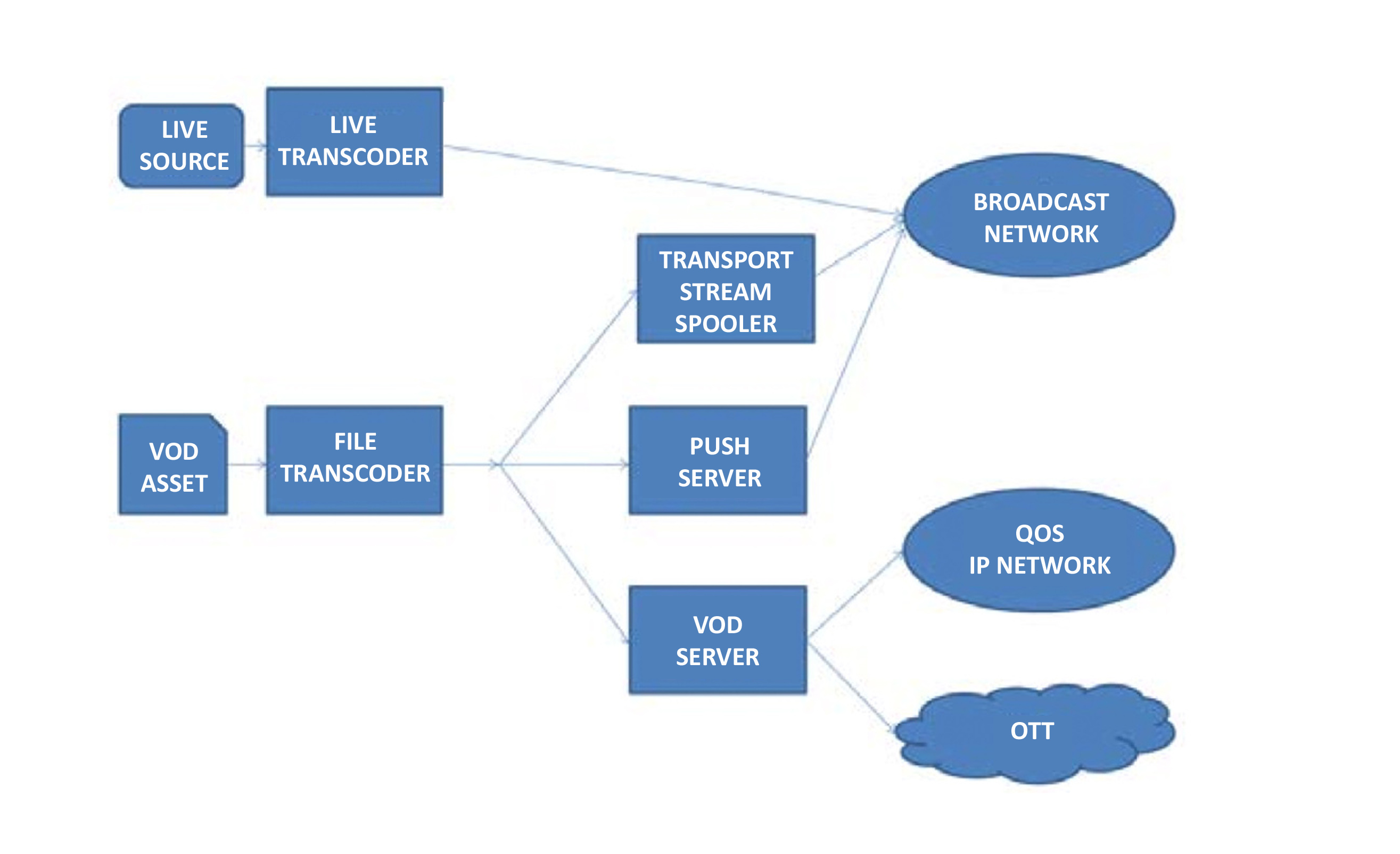
“Over the last year, BBC R&D has performed a series of trials producing TV, radio and web programmes using IP production techniques using a research prototype called Stagebox which has subsequently been licensed for commercial deployment. In these trials we have moved away from traditional broadcast technologies such as HD-SDI. This has enabled us to provide the full range of production tools, such as production talkback (four-wire), clean feeds, camera control and genlock, all over a wide area IP network.”
“The current model for an ISP is a connection charge and a multi-year contract, with a few months lead time to arrange for installation. This makes it harder for productions to budget an ongoing cost, and also be flexible at an OB location. A new model is going to be required by the industry where additional ISP capacity can be used on an ad-hoc basis. A model where costs are per week, not spread over two or three years, and one where the cost of a link does not exceed the cost of a satellite link.”
Ethernet-based Audio Video Bridging
Jan Eveleens of Axon Digital Design addressed the challenge of ‘Introducing Ethernet AVB Technology in Live Production Environments’:
“SDI interfacing has significant drawbacks. It requires a separate cable for each signal. It allows some multiplexing of different signals on one cable but this is rather limited, quite application-specific and not very flexible. Additionally, SDI by design is only unidirectional, where in quite a few cases signal flow is also bidirectional, which means more cables, connectors and ports on the router. To allow for maximum flexibility, today’s installations typically have a central-router architecture with all signal sources and destinations connected to a router in a central location; locally generated signals have to travel all the way to the central router and all the way back, even if the signal is used only locally.”
“The video data-rates used in broadcast infrastructures have for a long time been substantially higher than data-rates that were commercially available in Ethernet-based installations. This changed with the standardisation and introduction of 10GbE (10Gbs Ethernet) in 2002. 40GbE followed a few years later and 100GbE is also available, albeit currently mostly as back-bone/interconnect between Ethernet switches. 400GbE is currently being standardised by the IEEE and 1TbE (1000Gbs Ethernet) is already on the drawing board. So, from a bandwidth perspective Ethernet link speeds are growing much faster than any other communication technology, driven by the multi-billion-dollar sized R&D budgets of the IT industry. With the AVB elements added to the IEEE Ethernet suite of standards, this is the most viable system to succeed SDI in live production applications, offering substantial cost and flexibility benefits to the broadcast industry.”
Will AVB be good enough?
Peter Chave of Cisco Systems delivered a primer on ‘Routing Live Uncompressed Production Video on IP Networks’ (Figure 4).
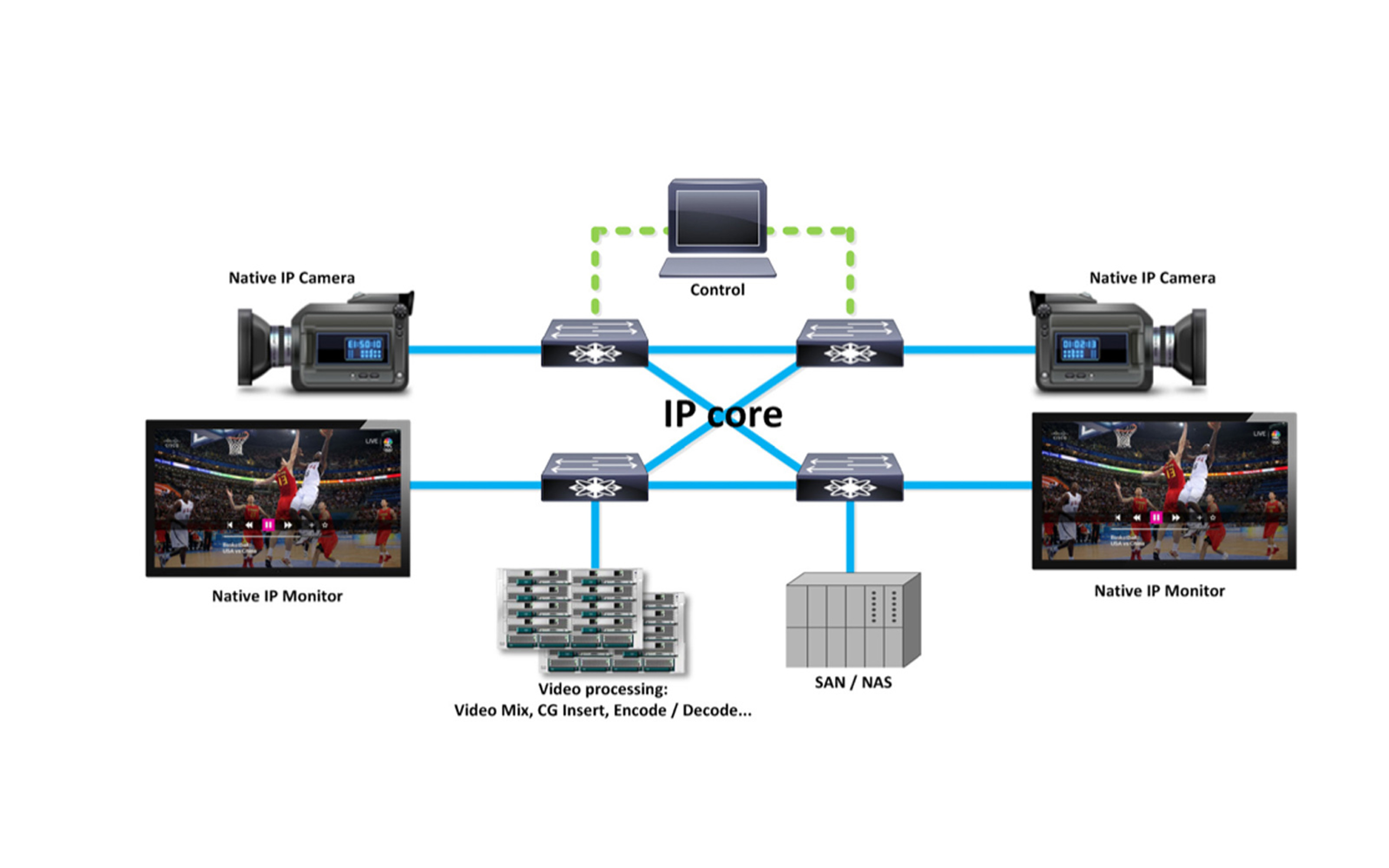
“A nexus of three events is propelling the IP shift to a tipping point.
1. New standards such as SMPTE-2022-1 and 2022-6 are breaking down the industry’s reliance on proprietary techniques and systems. As we have seen time and again, robust common standards are a strong catalyst to industry change.
2. Ultra-high definition (UHD) video (4K and 8K) is here. To support these enormously demanding services with today’s infrastructure, we are bundling dual and quad coax together. Clearly, this is only a stop-gap as we look for a better solution. Do we go with another “’to-be- finalised’ standard or with a ubiquitous and rich set of existing standards?
3. 10-Gigabit Ethernet is now where 1-Gigabit Ethernet was just a few years ago; the technology is available at commodity pricing. A universe of compatible equipment exists at a range of price points to accommodate ever-tightening budgets. Additionally, the industry has already defined 40-Gigabit-per-second (Gbps), 100Gbps and 250Gbps Ethernet standards, ensuring a long future.
SMPTE-2022 is playing a central role in the industry transition to the all-IP studio by providing a suite of standards concerned with the transmission of compressed and uncompressed video over IP. SMPTE-2022-6, in particular, provides a wrapper that encapsulates uncompressed baseband video like SMPTE 292M (and other signals), so that it can be carried in IP frames.
Once these signals can be carried as high-bit-rate IP traffic, studios can take advantage of a wide range of existing, standardised, IP mechanisms to optimise media transport.
Audio Video Bridging (AVB) is a suite of standards developed by the IEEE specifically for carrying time-sensitive data across networks. Its origins are in consumer, automotive, and some professional audiovisual applications. The standard includes some capabilities similar to IP, such as time synchronisation and bandwidth reservation.
The drawbacks with using AVB today, however, are its limitations with regard to layer-2 switching, which effectively constrain deployments to islands. Extending to layer-3 is a necessity for most medium-to-large real-world deployments. Work is ongoing to address the layer-3 limitations of AVB but the solutions chiefly involve enabling tunneling between islands. The key difference between this approach and that of SMPTE and AES67 is that the latter approaches begin natively at layer 3. It remains to be seen if AVB – with some extensions – will be deemed ‘good enough’ for professional audio and video.”
NAB 2015 Spring Convention
NAB returns to the Las Vegas Convention Center next April for the 2015 Spring Convention. The conference opens Saturday 11 April, running through to Thursday 16 April. The exhibition runs as usual 9am to 6pm from Monday 13 through to 2pm on the Thursday.




